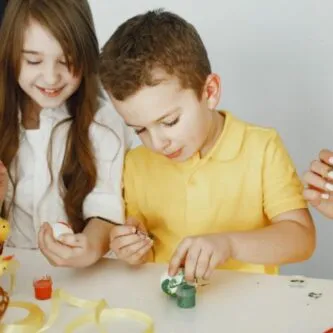
One of the most endearing qualities about kids is their never-ending sense of wonder. Their environment offers them endless learning opportunities. Parents often find their children asking about the simplest of things – like why trees’ leaves are green, or why the sky is blue. But it’s also often the case that as they grow older, they seem to lose this spark for learning.
As a parent, you always want to find ways to motivate your child to do better in school. It’s never a happy sight to see children lose their sense of curiosity in a classroom set-up because of several factors that you may not initially recognize.
Most of these factors may have something to do with children’s classroom experiences. In school, they might feel more pressure to achieve exemplary grades. Because of this, they may eventually begin to perceive grades as the end-all-be-all. Learning becomes a chore and something they no longer find desirable.
If you feel like your child might be having the same experience, then don’t fear. Continue reading to learn more about the simple practices you can do to reignite his passion for learning.
Do spontaneous activities
At the end of every school week, children are expected to complete their homework. You may find yourself spending several hours sitting alone with your child, just to answer a set of math problems assigned to him by his teacher. While homework is important, it may be exhausting for children’s minds.
What you can do as a parent is to take your child out to a place that can rouse his curiosity. An example would be at a children’s museum, where he can apply his school lessons in a more interactive manner. This is one simple way you can make learning more enjoyable for your child.
Offer hands-on learning
It’s not uncommon for children to lose their drive for learning because they may find their subjects too repetitive and unimaginative. If you’re beginning to sense a loss of enthusiasm in your child, you can re-energize him once more through fun, school-related activities at home.
For example, instead of making your child solve addition equations through traditional flashcards, why not make him respond by counting various objects in his surroundings that correspond to the answer? Not only will this enable you to have more interaction with your child, but this will also allow him to scan his environment and have more opportunities to encounter objects that he hasn’t seen before.
Encourage curiosity
As mentioned before, one of the reasons which might contribute to stifling your child’s drive to learn is the pressure he may face in school. This sense of wonder is not completely lost because you can encourage him to keep his desire to learn.
A simple way to do this is by indulging your child with an answer every time he has a question about something he might not know. You should always make it a point to give him the impression that no question he asks is ever too small or too insignificant.
In this way, you’re both feeding his curiosity as well as, letting him feel comfortable when communicating his concerns with you.
Be supportive
Finally, one of the best ways to rekindle your child’s love for school and learning is by being supportive of his healthy interests. By reassuring him that his interests are valid, you’re offering him more room for growth, in terms of honing his passions.
When children feel like they may safely practice their hobbies without fear of being told that their activities are a waste of time, they may start to feel more positive about other aspects of their learning.
Key Takeaway
Reigniting your child’s love for learning may be difficult to achieve, especially if you don’t know where to begin. Sometimes, this loss of passion might not be easily spotted as well. This guide above has hopefully provided you a starting point where you can begin to motivate your child to do better in school. Coupled with ample encouragement and support, you’ll soon find that your child might begin to show lively signs of curiosity once more.






-logo.png)



